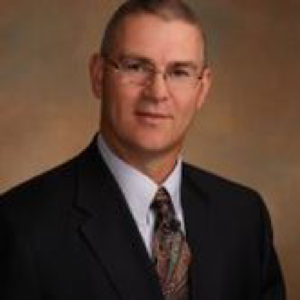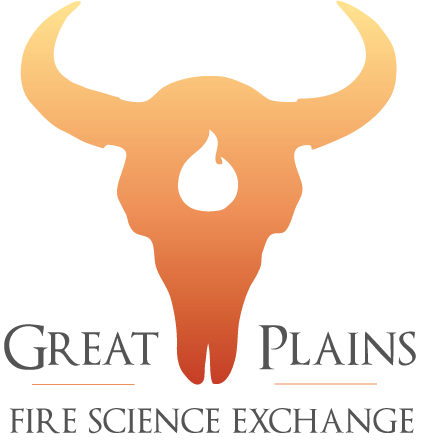Dr. Robert Mitchell
GPE: You were nominated by Al Steuter for this interview. Al wanted to know your thoughts on: what are the prospects for producing cellulosic ethanol from native grasslands or native plant materials on cropland?
In my opinion, producing cellulosic ethanol from native perennial grasses is one big step closer to reality. In 2014, three commercial scale plants (one in KS, two in IA) were opened that produce ethanol from cellulose, and a fourth (in IA) is near completion. One of these plants is using distillers grain as the feedstock, and two of the plants (as well as the plant that is nearing completion) are using corn stover. Although perennial grasses like switchgrass are not being used yet, the process to produce ethanol from corn stover and switchgrass is very similar. If these plants prove to be profitable, I think it’s only a matter of time before we see perennial grasses being used to produce ethanol.
GPE: Please tell us about how you chose grasslands and rangeland topics to study.
I grew up hunting and fishing in the Loess Hills of central Nebraska and was very interested in the hands-on side of wildlife and fisheries. In college, I gained a much better appreciation for the importance of managing habitat. I dropped out of college during my junior year to work and save money to get married. To put my wife through graduate school, I managed a restaurant. I returned to college with a more clear direction for what I wanted to study. I saw many of my wildlife friends getting jobs where they were managing people. I had done that in the restaurant business, so I decided I wanted to manage the natural resources as well as stay involved in agriculture. Grassland ecology and management was the clear choice for me. I went to graduate school at the University of Nebraska-Lincoln (UN-L), completing an M.S. focusing on the effects of fire and other management practices on tallgrass prairie and a Ph.D. focusing on the phenology, morphology, and nutritive value relationships in native and exotic perennial grasses.
GPE: Your publications list includes a diverse set of topics such as fire and grazing effects on erosion, herbicide trials, and wildlife habitat management (quail). What would you say is your favorite topic to learn about and why?
When I was growing up in a small town in central Nebraska, people would often ask me which sport was my favorite. My typical reply was whatever is in season. That’s a little how research is for me. Perennial grass systems are very complex, so the research opportunities are vast and I really enjoy working with a diversity of topics. Conducting research in many different subject matters keeps me interested and excited. I’ve published in about 45 different scientific journals and the variety has provided a lot of spice to my research life. During the past 13 years I’ve been entrenched in perennial grasses for bioenergy. It has been very exciting research and it’s really an honor to be on the ground floor of working to potentially develop new sources of energy and transportation fuel for our nation.
GPE: Where does fire fit in your ecological interests?
I had the privilege of taking a grassland ecology class with Dr. Jim Stubbendieck at UN-L. He ignited my interest in fire (pun intended). I then did my M.S. with Dr. Steve Waller at UN-L and Dr. Bob Masters with USDA-ARS in Lincoln, NE. Bob was an excellent fire practitioner, invested time to teach me about prescribed fire, and allowed me to learn about the art and science of applying prescribed fire. My first faculty position was at Texas Tech University where I had the honor to fill the position previously held by Dr. Henry Wright, the father of applying prescribed fire to grassland ecosystems. Working at Texas Tech gave me an incredible appreciation for the legacy that Dr. Wright and Dr. Carlton Britton have had on prescribed fire through their students (Al Steuter, Bob Masters, Guy McPherson, Allen Rasmussen, Steve Bunting, Chuck Stanley, and John Weir to name a few). Additionally, I own about 45 acres of native prairie and fire is one of management tools we use at home to reduce woody plants, so fire fits very well into my ecological interests.
GPE: For graduate students considering a career with ARS, do you have any thoughts about the pros and cons they should consider that you would like to share?
USDA-ARS is a great organization and I’d encourage any graduate student to consider a career with ARS. A couple of pros to point out are the opportunity to focus on research and the opportunity to conduct long-term research. As a research scientist with ARS, I have one primary job: conduct high priority, mission-driven research. I don’t have a teaching appointment or an extension appointment, but I can pursue those activities if the opportunities arise. Many ARS scientists can conduct long-term research projects that are difficult to conduct in other academic positions. For example, we have a long-term project comparing switchgrass production for bioenergy with dryland corn that is now in year 18.
GPE: What are the most important questions we need to answer for grasslands today?
How do we keep grasslands, especially our limited acres of native grasslands, from being converted to cropland or improved pasture? Although grasslands are profitable right now, how do we ensure grasslands will remain grasslands when livestock prices decline.

